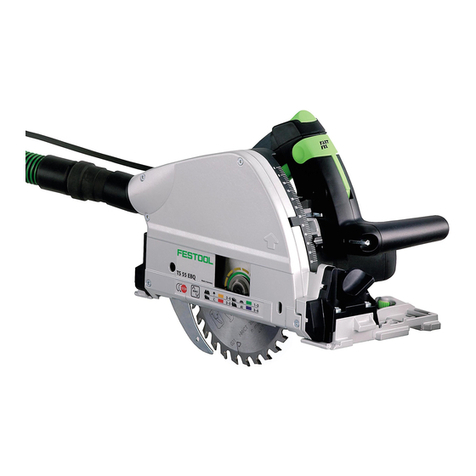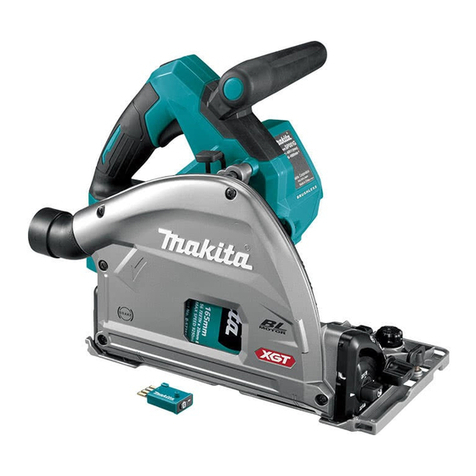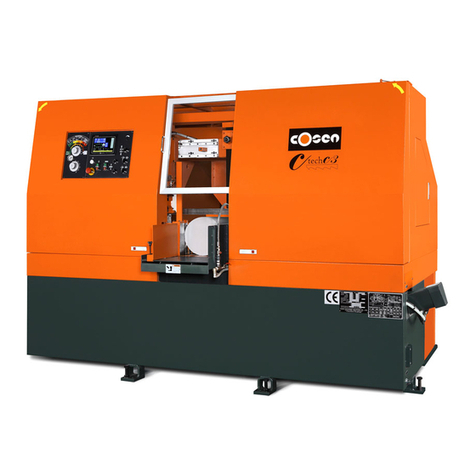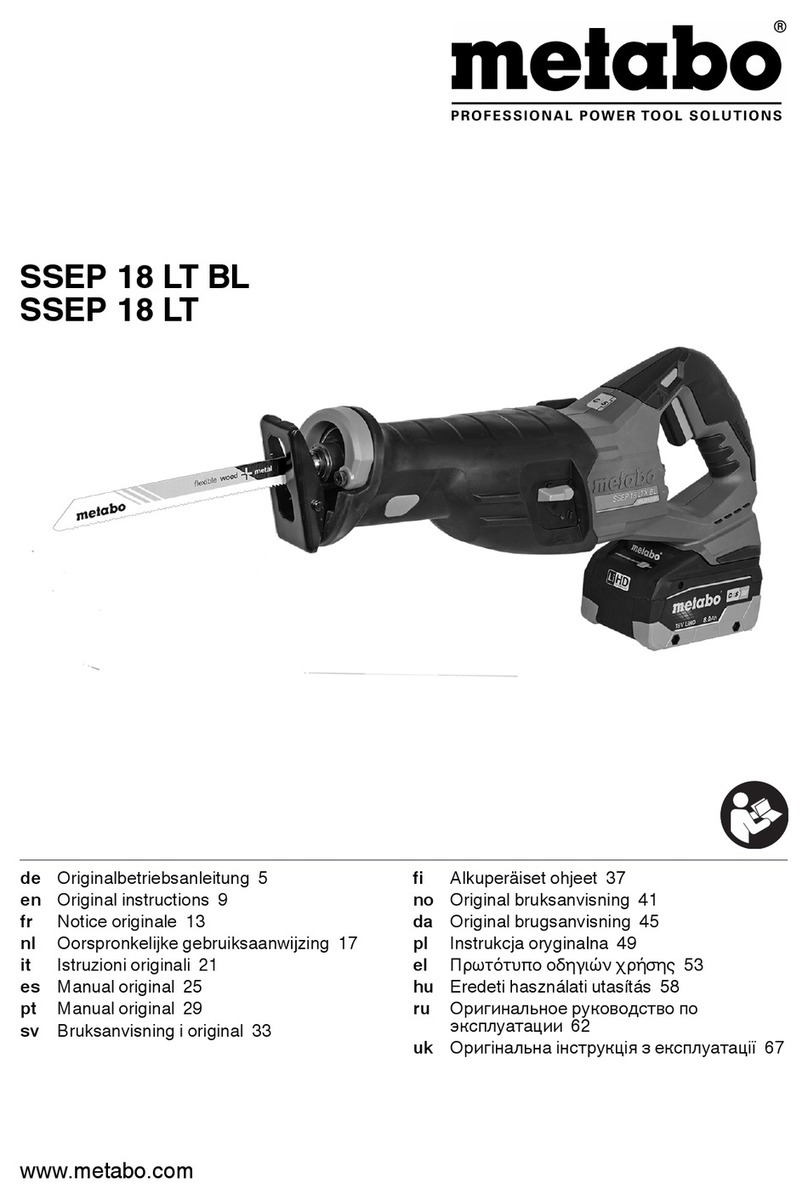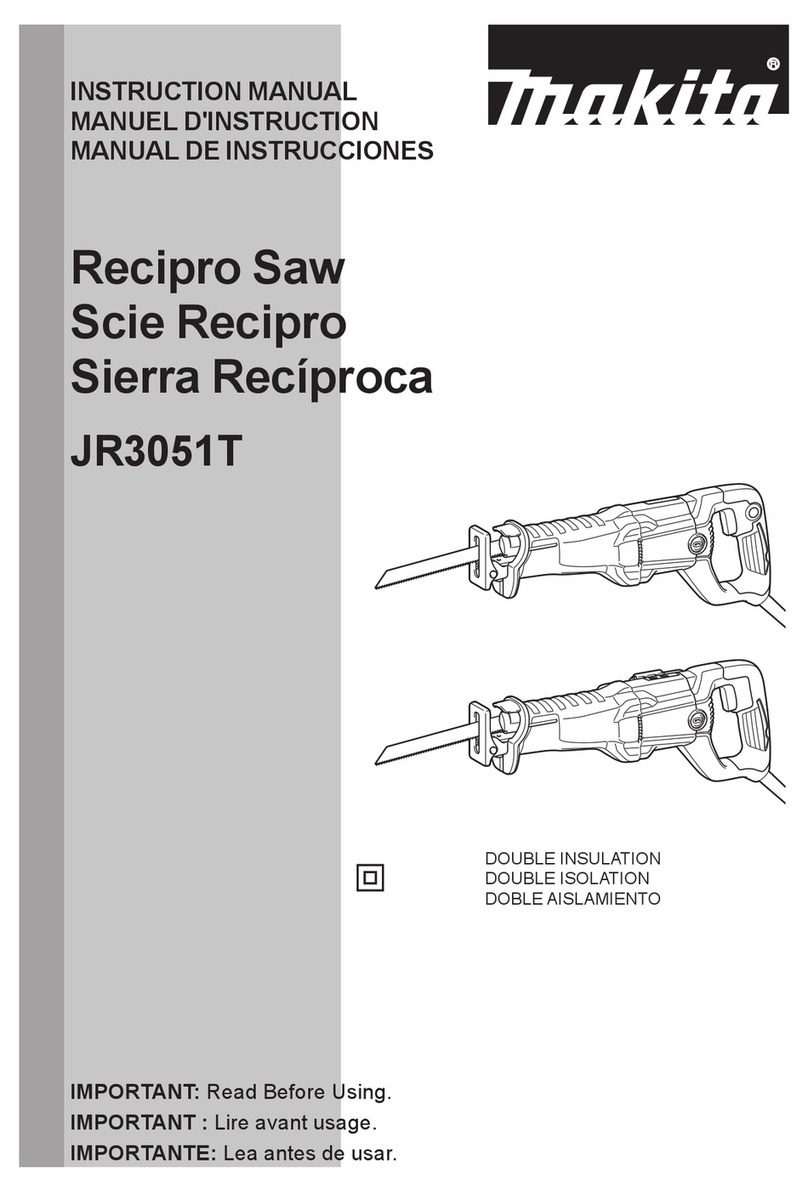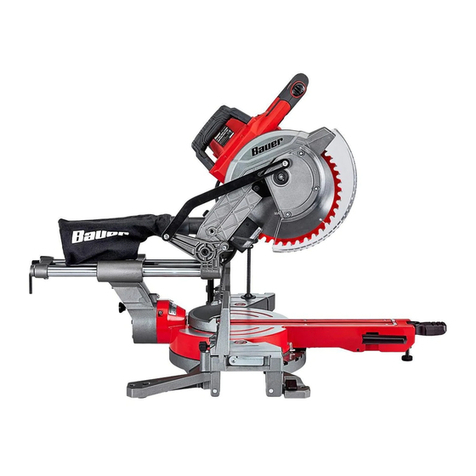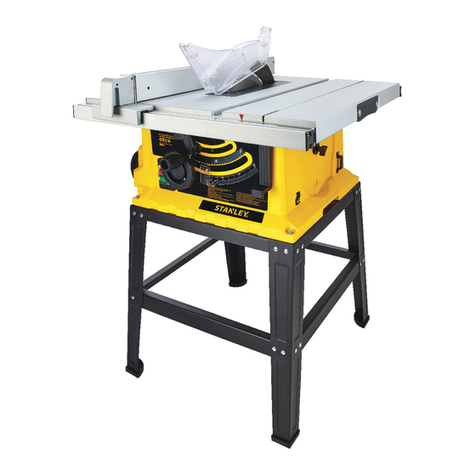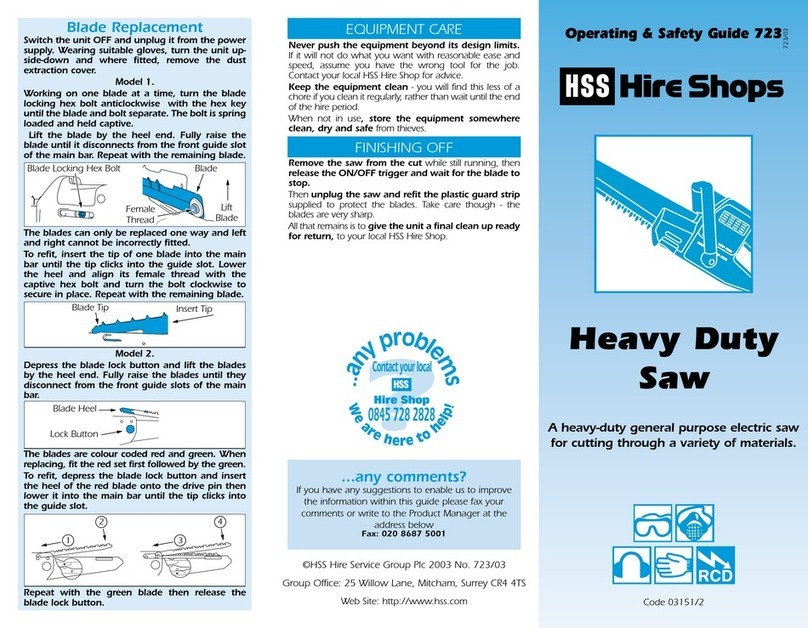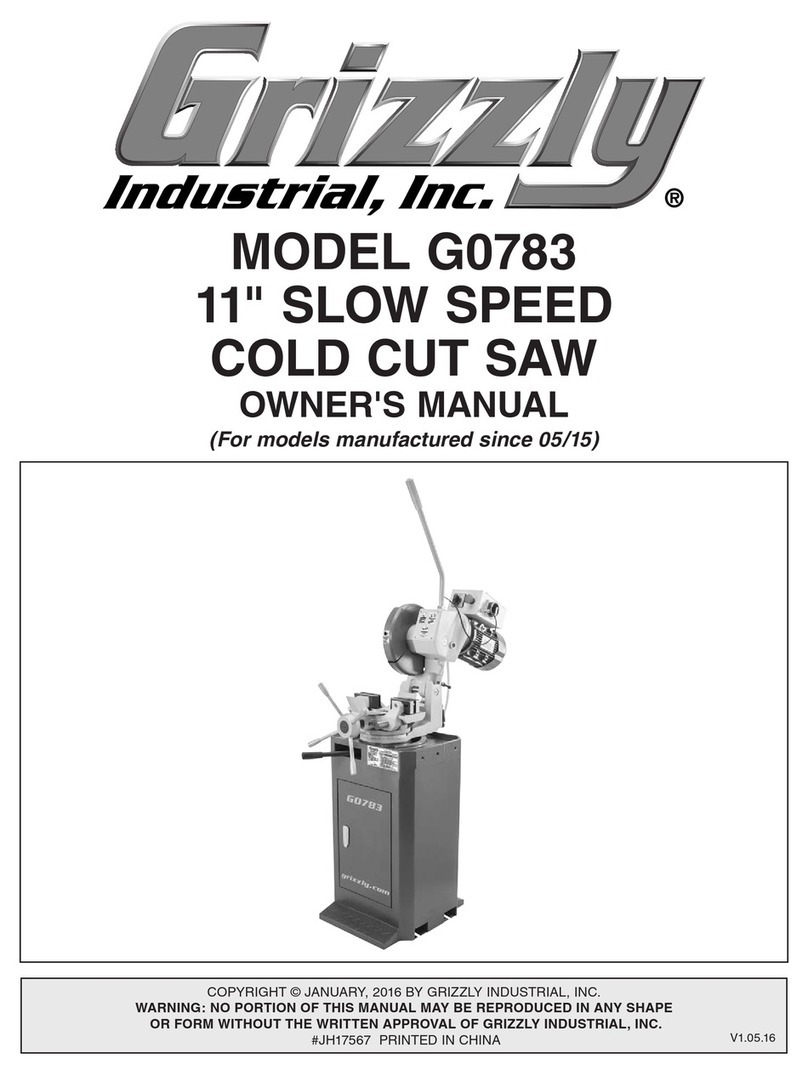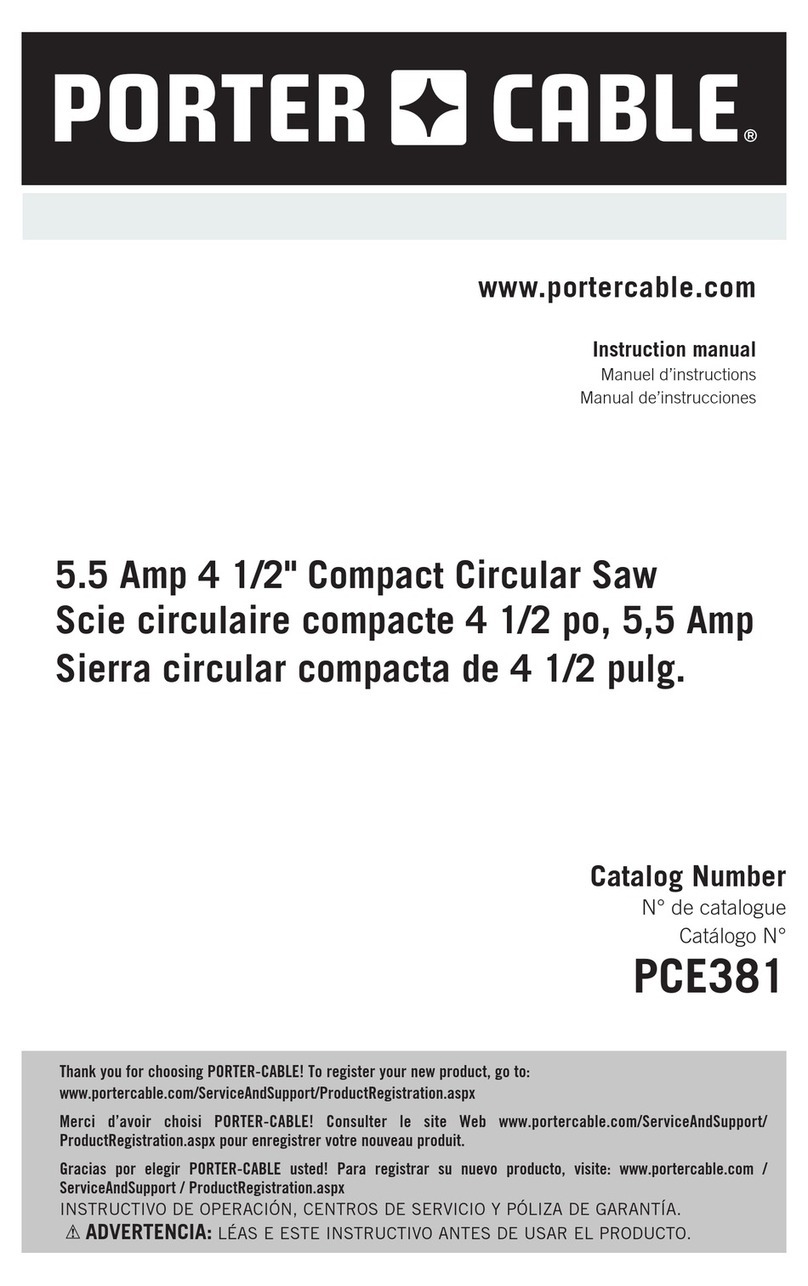Gemini Apollo Ring User manual

page 1
Sharing your passion for making jewelr
y.
Products. Service. Know-how.
Apollo Ring saw Instruction Manual
800.545.6566 www.riogrande.com

page 2
800.545.6566 www.riogrande.com
Sharing your passion for making jewelry.
Products. Service. Know-how.
Apollo Ring saw Instruction Manual
The Apollo Ring saw is shipped in two
(2) boxes. One box contains the saw
plus one or more blade cartridges.
The other box contains the slide
tray, magnetic angles, and mounting
hardware.
Depending on configuration, the saw
may include a sintered blade ring
cartridge for precision slicing and
gentle curve cutting (backward and
forward) in glass and stone; a wire
blade ring cartridge for extreme cutting
detail and omni-directional cutting;
a solid sintered blade cartridge
for standard straight cuts in all
materials and available in standard grit
(4" or 6" dia.) or in fine grit (6" dia.).
Six-inch versions will cut materials up
to 3" thick; four-inch versions will cut
up to ¾ " thick.
saw Setup
1. Remove and set aside magnetic filter
plate (fig. A).
2. Loosen the four (4) thumb nuts. (Fig. B).
3. Tilt saw and remove the clear plastic
cover (fig. C).
4. Remove the 8-32 hex nut and star lock
washer. Leave spacer and washer in
place (fig. D).
5. Insert keel from the top slot; secure with
star lock washer and 8-32 hex nut (figs.
E, F & G).
Assembly/Contents
Sintered Ring
Blade Cartridge
Wire Blade Ring
Cartridge (Electroplated)
Solid Sintered
Blade Cartridge, 4"
Solid Sintered
Blade Cartridge, 6"
A
C
F
B
D
G
Keel
E
E

page 3
800.545.6566 www.riogrande.com
Apollo Ring saw Instruction Manual
Sintered Ring Blade
Cartridge Installation
Note: All cartridges install in the same
basic fashion. The installation of the
sintered ring blade cartridge will be
shown in detail:
1. Be sure spring-loaded safety plunger
is pulled out all the way, turned and
locked, so that it does not interfere
with cartridge installation (fig. L).
2. Insert the blade with the directional
arrow pointed in a counterclockwise
direction as shown. Make sure that
the blade rests in the grooves of the
orange pulleys, and is sandwiched
between the red pulleys (fig. H).
3. Loosen both thumb knobs. Note: We
suggest loosening the knobs to have
plenty of wiggle room (fig. J).
4. Hold the blade/cartridge from the top
and lower it into the saw (fig. K). Note:
The blade should be positioned in the
center groove of the rubber belt and
that the top of the positioning plate
(fig. J) should align with the top of the
saw (fig. M). Tighten each thumb knob
(fig. J).
5. Turn and push the spring-loaded
safety plunger all the way in to lock
cartridge in place (fig. L).
6. Loosen belt tension knob and move
tension slider control down and
retighten to adjust belt tension (fig. N).
Note: Tension can vary for each blade
cartridge.
7. For set-up only: Double-check the keel
hex nut, making sure it is tight (fig. O).
8. Install the clear plastic cover (only
necessary during initial setup) onto
the back plate and tighten the thumb
screw (fig. P).
9. Adjust the splash guard to the desired
height and tighten the wing nut. Note:
Adjustment is correct when magnets
float closely over the blade without
touching. Note: Little cuts in the
magnets may occur and will not affect
magnetic pull (fig. Q).
10. Place the magnetic filter plate over the
screw heads (fig. R).
J
L
N
P
R
thumb knobs
Top of Positioning Plate
spring-loaded
safety plunger
H
K
M
O
Q
Note
Directional
Arrow

page 4
800.545.6566 www.riogrande.com
Sharing your passion for making jewelry.
Products. Service. Know-how.
Apollo Ring saw Instruction Manual
Solid Sintered Blade
Cartridge Installation
Note: All cartridges install in the same
basic fashion. Refer to the Sintered
Blade Cartridge Installation section for
full details.
1. Be sure spring-loaded safety
plunger is pulled out all the way,
turned and locked, so that it does
not interfere with the cartridge
during installation or removal (fig.
L).
2. Loosen both thumb knobs. Note:
We suggest loosening the knobs to
have plenty of wiggle room (fig. J).
3. Loosen belt tension knob (fig. N).
4. Lower the blade cartridge into the
saw (fig. S). Note: The blade should
be positioned in the center groove
of the rubber belt and that the
top of the positioning plate (fig.
J) should align with the top of the
saw and not stick up (fig. T). Tighten
each thumb knob.
5. Turn and push the spring-loaded
safety plunger all the way in to lock
cartridge in place (fig. L).
6. Move tension slider control down to
adjust belt tension (fig. N).
Note: Tension can vary for each
blade cartridge. Tighten belt
tension knob.
7. Adjust the splash guard to the
desired height and tighten the wing
nut. Note: Adjustment is correct
when magnets float closely over the
blade without touching. Note: Little
cuts in the magnets may occur and
will not affect magnetic pull (fig. Q).
8. Place the magnetic filter plate over
the screw heads (fig. R).
Wire Blade
Cartridge Installation
Note: All cartridges install in the same
basic fashion. Refer to the Sintered
Blade Cartridge Installation section for
full details.
1. Be sure spring-loaded safety
plunger is pulled out all the
way, turned and locked, so that
it does not interfere with the
cartridge during installation or
removal (fig. L).
2. Loosen both thumb knobs.
Note: We suggest loosening the
knobs to have plenty of wiggle
room. (fig. J).
3. Loosen belt tension knob (fig. N).
4. Lower the blade cartridge into the
saw (fig. U). Note: The blade should
be positioned in the center groove
of the rubber belt and that the
top of the positioning plate (fig.
J) should align with the top of the
saw and not stick up (fig. V). Tighten
each thumb knob.
5. Turn and push the spring-loaded
safety plunger all the way in to lock
cartridge in place (fig. L).
6. Move tension slider control down
to adjust belt tension (fig. N). Note:
Tension can vary for each blade
cartridge. Tighten belt tension
knob.
7. Adjust the splash guard to the
desired height and tighten the wing
nut. Note: Adjustment is correct
when magnets float closely over the
blade without touching. Note: Little
cuts in the magnets may occur and
will not affect magnetic pull. (fig. Q).
8. Place the magnetic filter plate over
the screw heads (fig. R).
ST
UV

page 5
800.545.6566 www.riogrande.com
Apollo Ring saw Instruction Manual
Filling With Water
1. Fill the tub all the way up with water.
NEVER USE SAW WITHOUT WATER!
Note: Each of the four (4) tub feet
is removable for draining water. To
empty out water simply remove any
one of them (fig. X).
2. Mount the saw on the water tub,
making sure that the washers are on
the outside. Tighten the thumb nuts
(fig. Y).
Installation of Slide Tray
Slide tray and mounting hardware
comes shipped in a separate box. (fig. Z).
1. Remove and discard mounting clip
and white foam packing (fig. AA).
2. Install Front and back mounting rails
using screws and washers. Do not
fully tighten screws at this time (figs.
BB, CC).
3. Install left and right rails. Carefully
note mounting position. Inner
U-channels must be located at the
front of the saw. Use provided nuts
and washers to install. Do not fully
tighten screws at this time (figs. DD,
EE).
4. Install slide tray as shown so that the
tray sits on top of the rails and under
the inner and outer U-channels (fig.
FF and DD).
5. Place a magnetic angle on either side
of the black zero mark. Slide the tray
forward until the full blade appears
to be in dead center front to back
between the magnetic angles (fig.
GG). Tighten all tray hardware (fig.
HH).
WX
DD
CC
YZ
BB
AA
EE FF
GG HH

page 6
800.545.6566 www.riogrande.com
Sharing your passion for making jewelry.
Products. Service. Know-how.
Apollo Ring saw Instruction Manual
6. The cut is square when the cut made
by the front of the blade passes
through the back of the blade (fig.
JJ). Note: Minute adjustments, if
necessary, can be made by loosening
the two screws holding the rear rail
and lightly tapping left or right with
the handle of a screwdriver (fig. KK)
and then tightening the screws.
JJ KK
LL MM NN
Figure LL: Straight cutting using the
magnetic angles.
Figure MM: Diagonal cutting using
the magnetic angles.
Figure NN: 45° Mitre-cutting using
the magnetic angles.
Do’s and Don’ts
1. Never use the saw dry! Always use
water. If it is wet and you wish to
check something you can flick it on
for a second or two but never try to
cut with the saw unless it is sitting in
the water bath full of water.
2. Always use eye protection. You
never know when a loose piece of
material can pop up and hit your
eye so be careful and always use eye
protection.
3. Always use genuine Gemini saw
parts for your saw. We have taken
the time to make them right the first
time so copies (if or when they exist)
can endanger the quality of your
experience and void your warranty.
4. Always unplug your saw when not
in use.
5. Always unplug your saw if you are
going to perform a procedure that
requires the removal of the clear
side cover (fig. C).
6. Never submerge your Apollo saw
in water, plugged in or unplugged.
7. Never allow water from a hose to
splash directly against the motor
end. Although the motor end is
sealed and drip-proof, force from a
hose could potentially damage the
electronics within.
Care & Maintenance
BASIC CARE
• When cleaning the Apollo saw, use a
wet sponge or cloth and wipe lightly.
Remember, it is a painted steel base
and what you have been cutting has
created an abrasive paste. Use a lot
of water and a light touch.
• Change the water in the water bath
regularly. When cutting soft tile
there is a great deal of debris in the
bath, and water should be replaced
at least two times a day during use.
Glass products have the advantage
of forming a whole new bottom to
your water bath by solidifying. It is
a good idea to change the water
every few days in this case. When the
saw is not in use you do not have to
empty it but remember to fill it to
the top when you go to use it again
as evaporation may have brought
the water level down.
• Use furniture polish to make the tray
felts run quicker. We use Pledge® and
it works really well to spray the felts
every so often.
• Sometimes, if sediment builds up on
the saw, a few drops of detergent
put into the saw will create a lot of
suds to clean the smaller parts. Let
the saw run a few minutes and then
rinse it out.
• The water bath can be put through
the dishwasher. Be sure to use a hose
to rinse out the heavy sediment
prior to washing. Remove all four
rubber feet and place vertically into
the dishwasher.
• The magnetic filter can be cleaned
by rinsing it under the faucet or
swishing it in a bucket of water.
• It is a good idea from time to time to
take your tray off and allow the felts
to dry. This can greatly increase ease
of motion.

page 7
800.545.6566 www.riogrande.com
Apollo Ring saw Instruction Manual
©2012 The Bell Group, Inc. All rights reserved.
Care & Maintenance (continued)
CUTTING TECHNIQUE
• Always let the blades do the cutting.
Forcing the material through the
blade will not only cause a slower
cut but can also shorten the blade
and belt life.
• There is an optimum feed speed (that
point at which you get maximum
cutting speed for minimal pressure)
for each blade in each material—
you can feel it while you are cutting.
Sensitivity to this causes extremely
long blade life.
SINTERED RING BLADE:
• “Sintered” means that the blade is
comprised of powdered metal with
diamond throughout its entirety.
This makes the blade last many times
longer than electroplated blades
and its cut speed remains constant
throughout its life. The only change
is a slow decrease in size.
• The action of this blade is like a
forward and backwards cutting band
saw and a radial saw, all combined.
They come in both standard and fine
formulations.
• These saws can turn on a dime,
even in amazingly thick materials,
if you take your time and not force
them. The ability to cut backwards is
hugely useful as you can back out or
change direction without having to
rotate the material.
• When cutting curves it is necessary
to take into account that the trailing
edge of the blade also cuts. For this
reason on a particularly tight inside
curve, you may have to veer away
from the edge, trusting the tail of the
blade will sweep by and finish it for
you.
• Note that if the blade is doing hard
work, cutting tight curves through
thick material, you may have to lift
up the splash guard to get it out of
the way. You may get wet but it is
acceptable to do this. Try to keep the
blade in the vertical position while
cutting.
• These blades are tough, but not as
tough as the solid blades, so let the
blade do the cutting and give it the
time it needs to finish. For quick
straight cuts, change to a solid type
blade.
• Straight cuts with these blades can
yield tiny precise slices of material
with an almost polished edge. The
slower the cut the more accurate it
will be. Using these blades, we have
actually cut black granite so thin that
the slices were transparent.
4" SOLID SINTERED BLADE:
• The four inch solid blade cuts well as
a tile saw. Because it is peripherally
driven it is quite standard and will
cut all tiles up to 2cm (¾ ") thick.
• When cutting thicker material (up
to one-inch thick) with this blade,
be careful not to cut into the tray
at the end of the cut as the lower
part of the blade leads. To do this,
put a couple of tile or wood spacers
between the material and the end of
the tray.
• Solid blades can be pushed harder
than any of the other blades. The
only caution is to never allow belt
slippage. If the belt slips (the motor
makes no sound change) and the
blade seems to slow down, stop
pushing immediately and tighten
the belt tension. If it persists you
must push less hard.
• With this blade, there can be
some breakout at the end of the
cut. Turning the tile upside down
when cutting can eliminate this
occurrence.
6" SOLID SINTERED BLADE:
• The advantage of the six-inch blades
over the four-inch blades is that they
are available in both standard and
fine grits and can cut materials up to
3" thick. The cut is more vertical and
the blades last longer.
• Solid blades can be pushed harder
than any of the other blades. The only
caution is to never allow belt slippage.
• If the belt slips (the motor makes
no sound change) and the blade
seems to slow down, stop pushing
immediately and tighten the belt
tension. If it then persists you must
push less hard.
WIRE BLADES (Electroplated):
• “Electroplated” blades have one layer
of diamonds held on by nickel. The
diamond does not wear; it is actually
the nickel that wears, releasing the
diamond. Electroplated blades do
not last as long as sintered blades
and the cutting speed changes
throughout their life, becoming
slower and slower over time.
• When cutting soft or thin materials
such as ⁄" art glass, wall tile, etc., the
electroplated blades last a long time.
How long? This depends on your
cutting technique. Get the feel of the
cut and the blade can last years. You
should get 40–60 hours even if you
don’t get the feel.
• Keep in mind that as soon as you
cut hard or thick material, the high
points of the diamonds get knocked
off, making them smoother but
slower. Fine blades cut smoother but
don’t last quite as long.
• Electroplated wire blades cut in
any direction, which makes them
the most versatile blades for shape
cutting. They are best restricted to
thinner materials such as ⁄" art glass,
wall tile, ¼ " acrylic (like plastics) and
softer materials.
• These blades cut in any direction,
like laser beams, and make an
excellent compliment to the
sintered ring blades. You can do
the majority of the work with the
sintered ring blade and the detail
with the wire electroplated blade.
Having read this manual, you are
now armed with knowledge that will
make your experience more enjoyable
and your results more professional.
Thank you for choosing a Gemini Saw.
Table of contents
Popular Saw manuals by other brands
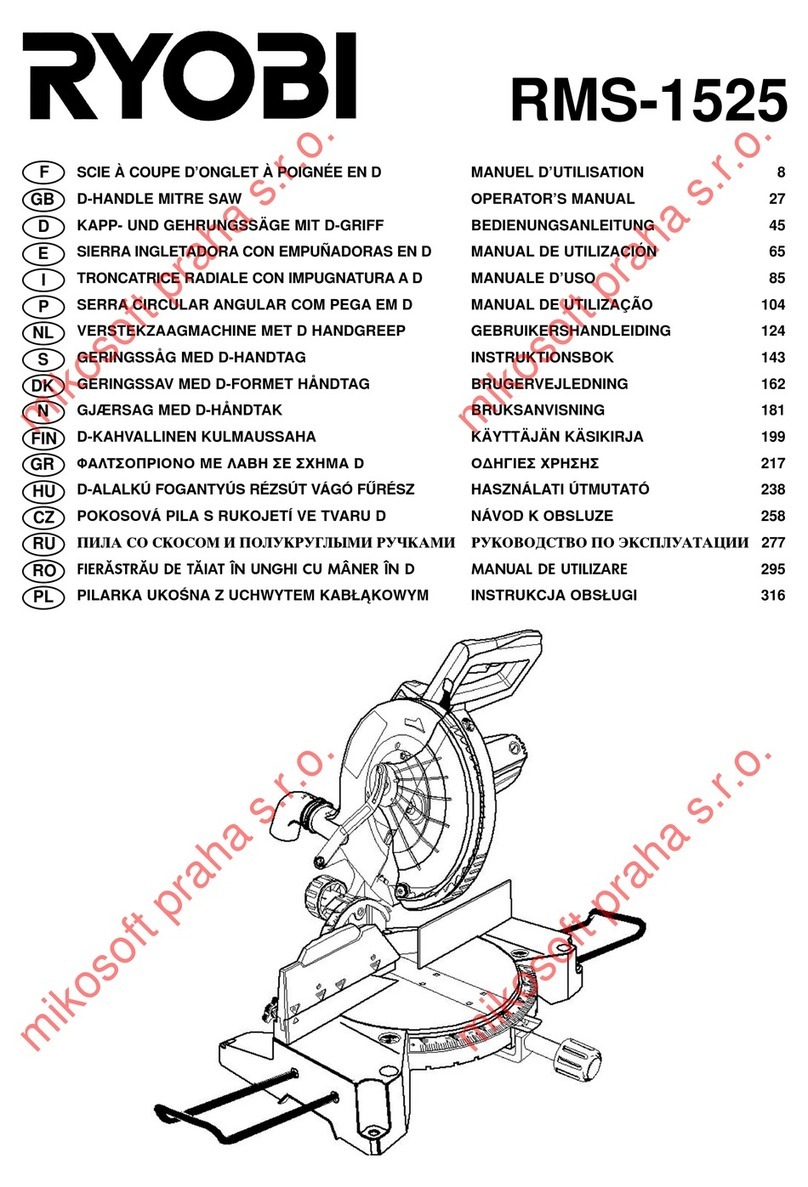
Ryobi
Ryobi RMS-1525 Operator's manual

Erbauer
Erbauer ERI490CSW Original instructions

DS Produkte
DS Produkte BG-W-2538 instruction manual

Worcraft
Worcraft TS-2000A instruction manual

MK Diamond Products
MK Diamond Products MK- 2005G Owner's manual & operating instructions
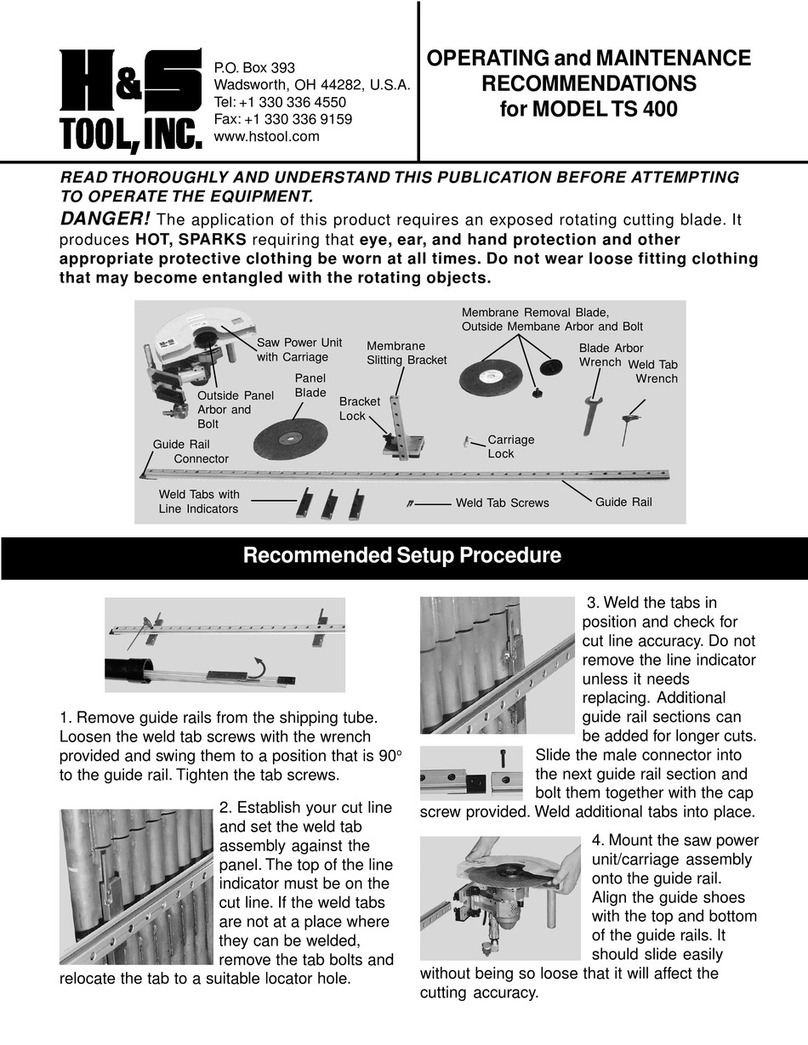
H&S
H&S TS 400 Operating and Maintenance Recommendations
